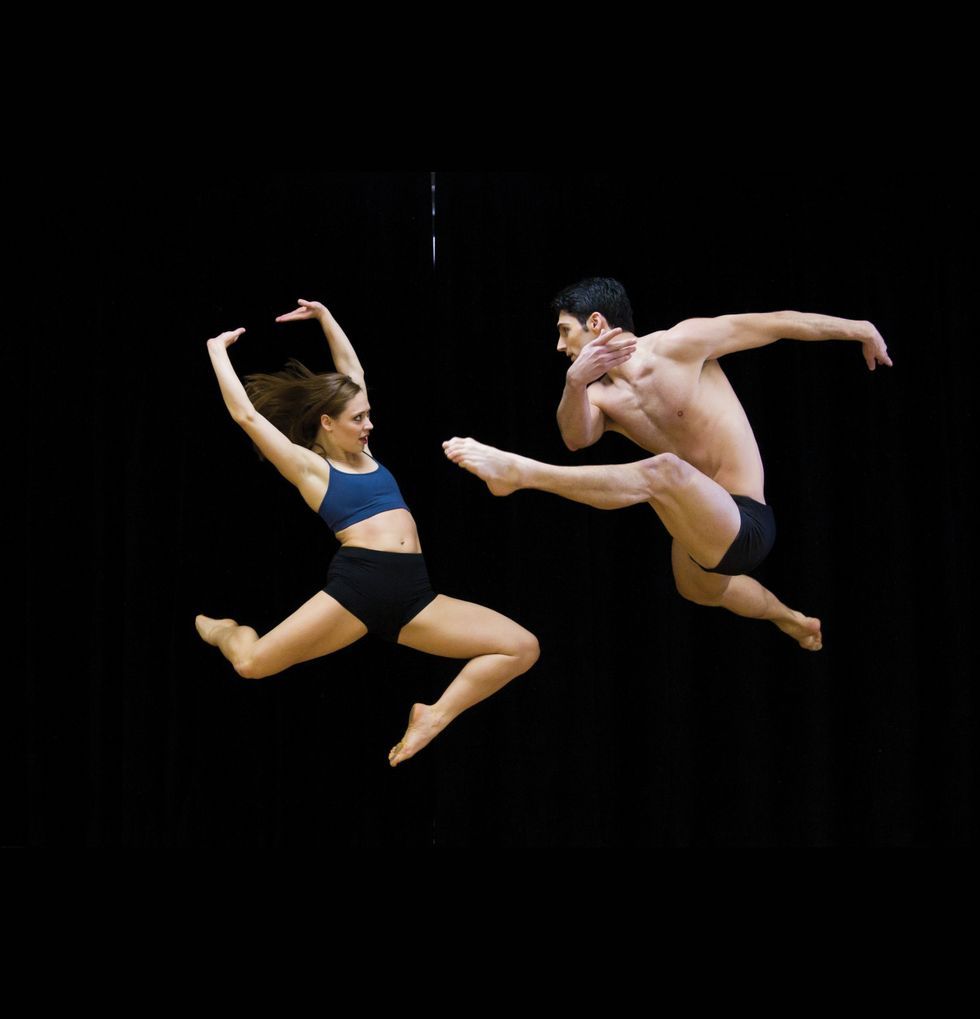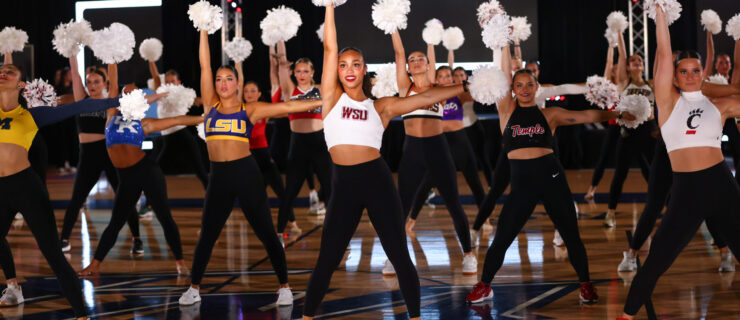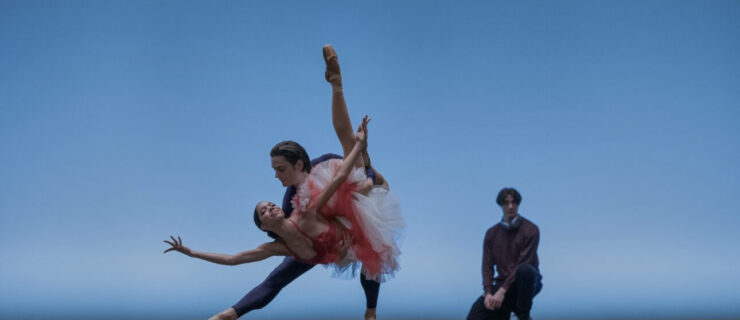Road Warriors: Surviving Life on Tour
Teresa Espinosa was 23 when she booked her first major world tour. It was Janet Jackson’s Velvet Rope Tour, which meant spending 10 months performing across the globe. The job was a dream come true. But on the first day abroad, Espinosa stood alone in her foreign hotel room. “I felt clueless,” she admits. She had no idea how to get over her jet lag or where to get food. She quickly realized: Life on the road was going to be harder than she expected.
If you want to dance in a traveling production or in a road company, be prepared for more than an exciting life as a jet-setter. Whether you’re away for one week or an entire year, you’ll likely encounter your share of hardships. It’s not easy to stay healthy, keep yourself in top shape and stay connected to the people you love while you’re constantly on the move. Read on to see how you can thrive on tour.
Catching Zzzz’s
Traveling can wreak havoc on a dancer’s body—and nothing throws a performance off more than lack of sleep. But there are things you can do to ease the stress.
When she’s on the go, Melissa Ullom of Parsons Dance travels with a pillow, a sleep mask and earplugs. “I like to be prepared,” she says. “I never know when I’m going to get a chance to sleep.” Nabbing a window seat on a long flight will allow you to rest your head on the wall. Or, if the plane’s not full, lie down and stretch out across a few empty seats.
Once you arrive in a new time zone, use discipline to deal with your jet lag. Ashley Bouder, a principal with New York City Ballet, adjusts to the time change by staying awake, going to sleep or eating a meal, according to her new city’s schedule. “Even if you’ve just had dinner on the plane, if it’s time for breakfast where you land, eat something,” she says.
Munching Mindfully
If you’re traveling to places where the food and water are questionable, pack a bag of snacks and drink bottled water to stay hydrated. When Bouder toured to St. Petersburg, Russia, she was told not to drink the water because it contained parasites. That meant vegetables were discouraged too, because they were washed in water. “I had to pack a lot of peanut butter, energy bars and snack food so I could eat in my hotel room if I couldn’t find dinner somewhere,” Bouder says.
Staying in Shape
On a commercial tour, dance classes aren’t usually required or even offered, so you’ll have to figure out how to stay conditioned on your own. Take advantage of hotel gyms and pack exercise DVDs that you can play in your room, either on the hotel TV or on your laptop. Some dancers take an early morning run or walk, while others go for a swim in the hotel pool.
Prepping for the Performance
After spending hours in transit, traveling dancers often have to go directly to the theater to perform—without any warm-up or rehearsal time. If this happens to you, do some lunges and hip rotation exercises on the bus or plane to get your body out of a stiff seated position. Move around as often as possible to keep your body loose. Ankle circles and gentle plié-relevés—which you can do standing in the aisles—will keep blood flowing to your feet. When Bouder is on a long flight, she wears compression socks to minimize swelling and gets up to walk around while people are sleeping. “I go back by the bathrooms and do a 15- to 20-minute barre,” she says. “It’s pretty much the only thing you can do.”
Scoping Out a New Stage
You might assume that arriving at the theater means relief, but it could feel uncomfortable as well. Dancers often deal with limited warm-up space and small stages. If that’s the case, get creative: Do a barre in the hall outside your dressing room and cover a little less space onstage during the show. Some places might even be larger than you expect. On a huge stage, take advantage of the extra space by making your movements as full as possible. Radio City Rockette Beth Dukleth feels like a rock star when she performs in concert arenas, yet other dancers feel that audiences in bigger houses are too far away. “It’s like you’re dancing in a cave,” says Jason DePinto, dance captain on the Billy Elliot national tour. “Still, no matter what the seating capacity or backstage layout, the show is the constant.” The energy and focus you put into your dancing should never change.
Maintaining Relationships
How do you share your tour experiences with loved ones back home? Most dancers rely on their cell phones or Skype to stay connected. You can also create a blog to write about your travels and post photos. Send your blog link to friends and family, and they’ll feel like they’re on the road with you.
Remember, a touring group is together almost 24/7. Dukleth says this togetherness makes for a better show. “It’s a team effort,” she says. “We have to be supportive of each other offstage and on. Getting along makes it a better experience.” If you have to travel with someone you don’t like, put some space between yourself and that person (even if it’s just a couple of bus seats). The situation won’t last forever—at some point, every tour comes to an end.
When you’re finally home, you’ll feel proud knowing that you’ve survived life on tour. Nothing beats performing in front of new audiences and visiting places you wouldn’t normally get to see. “That’s like a dream come true,” Espinosa says.
Different Types of Tours
There are several different kinds of tours. They can be either regional, national or international.
Bus tours:
Dancers are always on the road and in a new city almost every day.
Ballet tours:
Dancers typically travel to one city and perform for several nights in a row.
Broadway tours:
There can be one or two shows in each city, or the show might “sit down” for up to seven weeks in one place before moving on to the next location.
Commercial tours:
Dancers travel and perform with an artist for up to a year at a time.
Touring Must-Haves
Making a packing list before hitting the road is essential. Here’s what these dancers never forget:
“A ring I got in Mexico. When it’s not on my finger, it’s with the stage manager.” —Melissa Ullom, Parsons Dance
“Balls to roll out my feet and a little pig figurine that my boyfriend gave me for good luck.” —Ashley Bouder, New York City Ballet
“Music and my travel pillow.” —Teresa Espinosa, commercial dancer and member of the Beat Freaks
“My computer is my source for everything. Number two is a foam roller.” —Jason DePinto, Billy Elliot
“My eye mask, earplugs, a pillow and pictures.” —Beth Dukleth, the Radio City Rockettes
“I pack as much as I can fit! I never know when I’ll be back home or be able to do laundry.” —Dana Foglia, commercial dancer
“My headphones, Clif bars, toe pads and spacers.” —Sarah Van Patten, San Francisco Ballet




